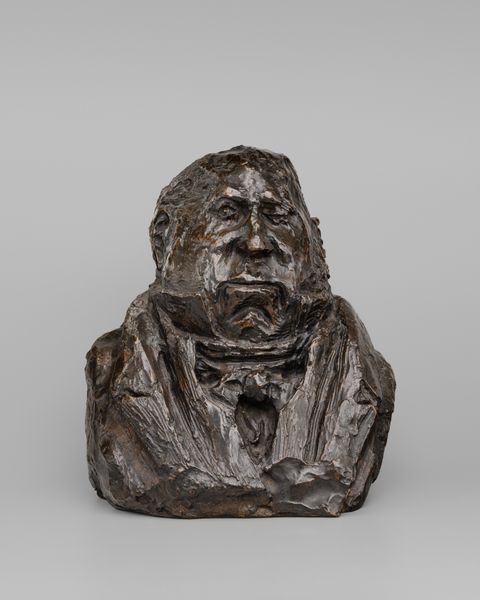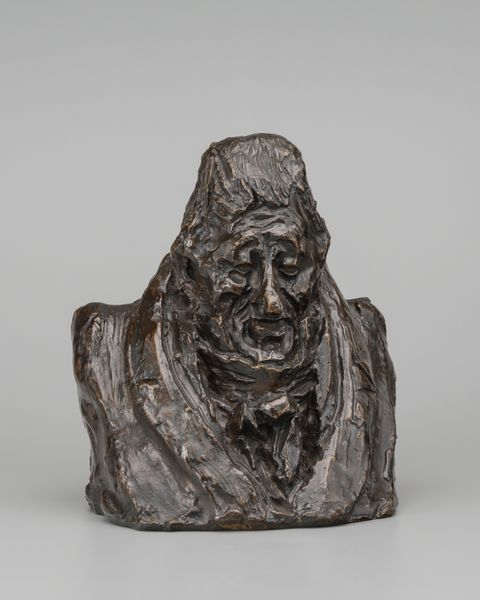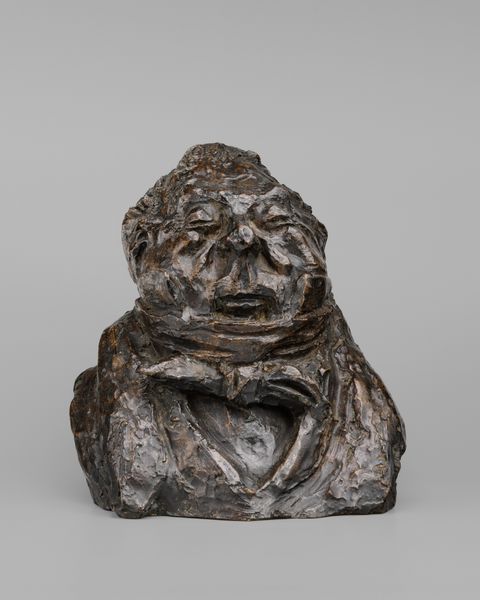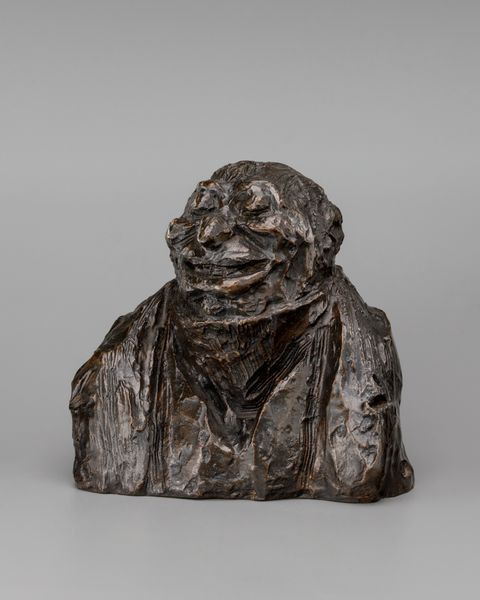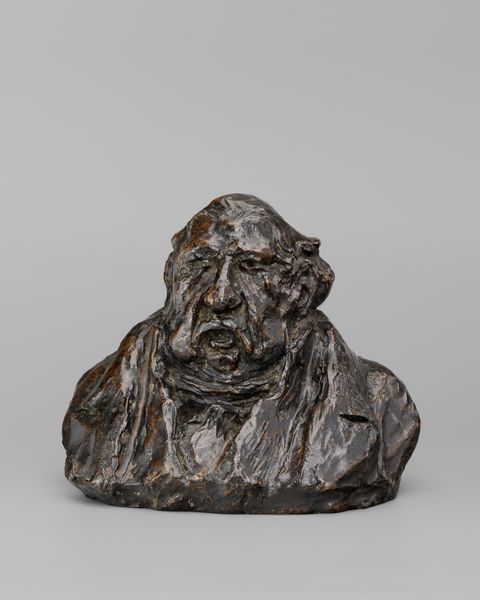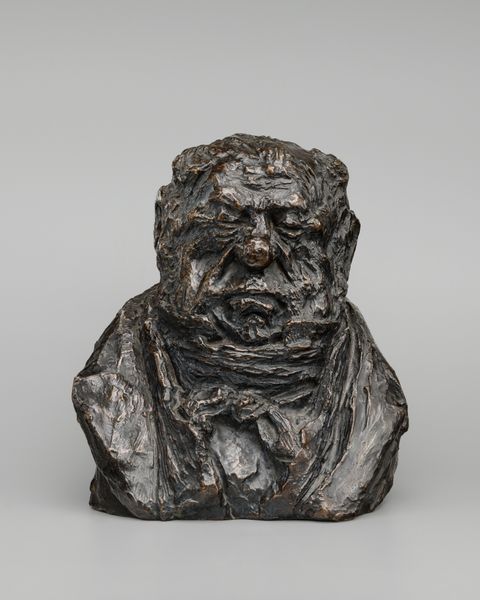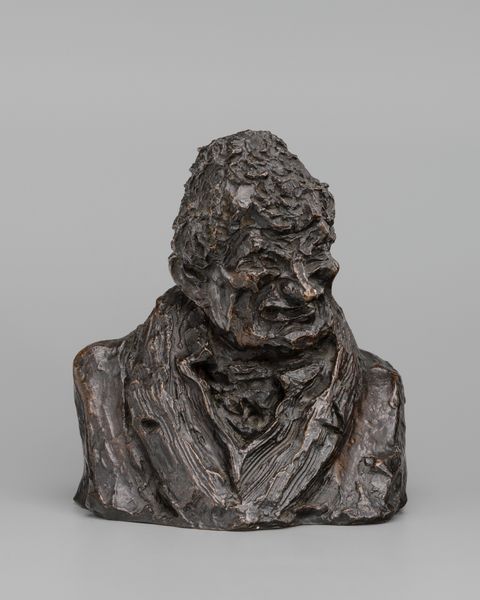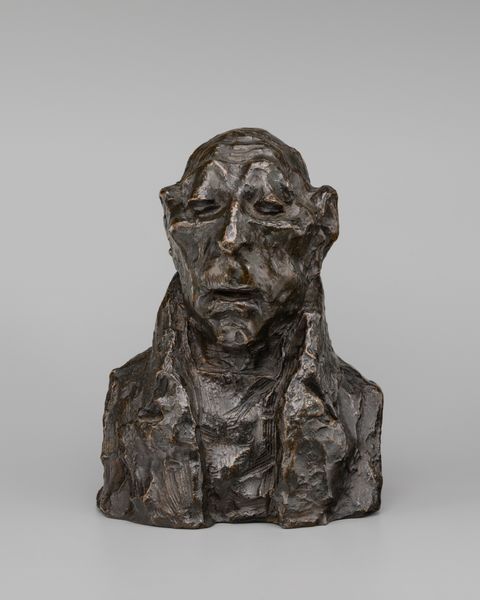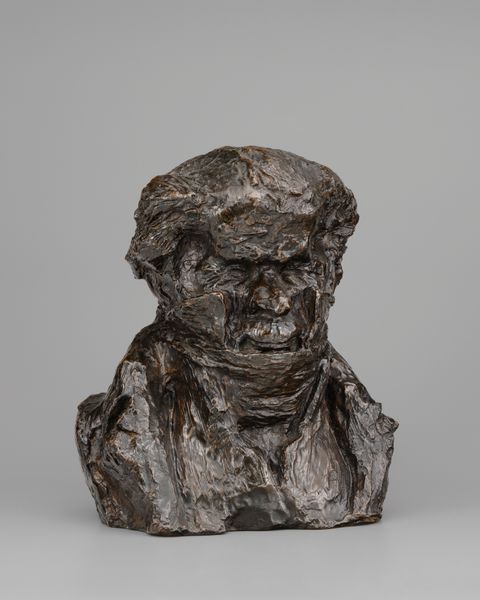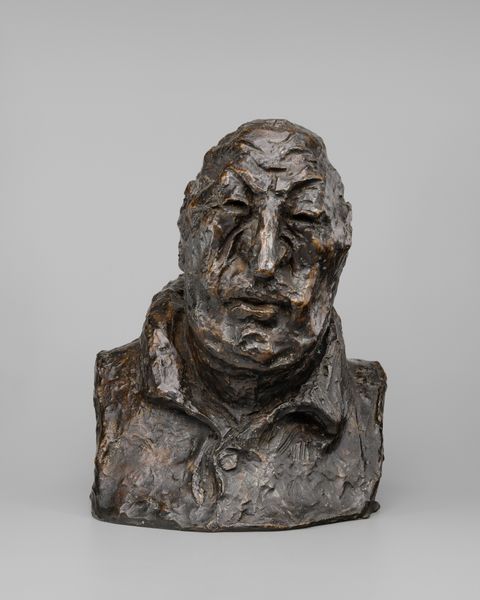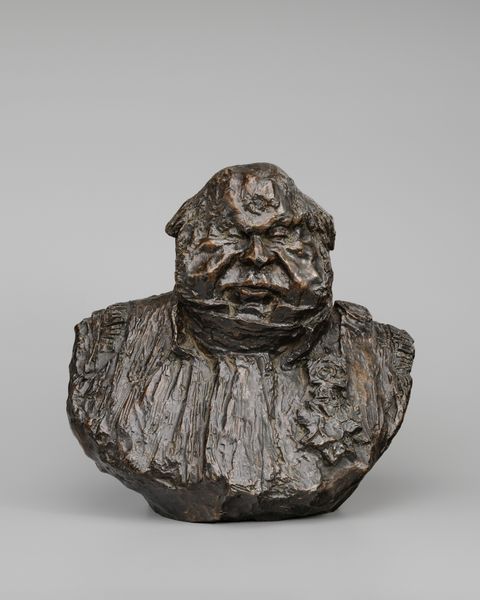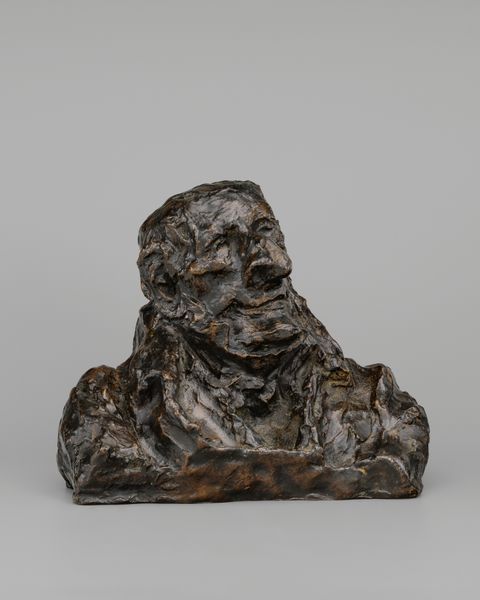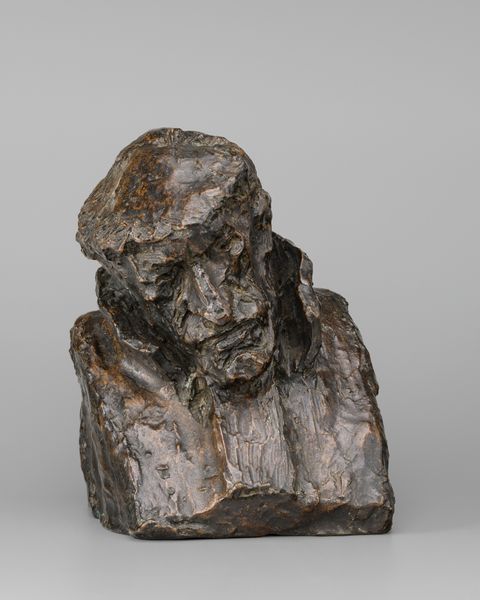
Dimensions: overall: 14.3 x 11.4 x 9.8 cm (5 5/8 x 4 1/2 x 3 7/8 in.)
Copyright: National Gallery of Art: CC0 1.0
Editor: This is Honoré Daumier’s bronze sculpture "Antoine Odier," dating from around 1832-1840. The surface looks very roughly hewn, and that seems to give it an incredible sense of presence, almost imposing. What should we make of a portrait rendered with this specific materiality and finish? Curator: Let's consider the socio-political context of Daumier's time. Bronze casting, while traditionally associated with commemorative sculptures of the elite, became increasingly accessible through industrial advancements. Does the raw, almost unfinished quality of the surface democratize the medium, suggesting Odier, while likely bourgeois, is being presented outside idealized aristocratic conventions? Think about the labor involved, the skill still required, but now serving a potentially broader audience. Editor: So you're saying the very process and material reflect a shift in social power? The way the bronze is worked could be as important as *who* is being depicted? Curator: Precisely. How does Daumier employ bronze as a material to reflect the changing social landscape? Was it initially intended as fine art or a preparatory study for larger works, or perhaps for mass production in a different medium? Furthermore, who was consuming these portraits, and what did possessing such an object signify about their own status and aspirations? What does the choice to cast in bronze mean here compared to a lithograph? Editor: That's fascinating. I was so focused on the subject, I didn’t really consider how the method and means of production are so crucial to understanding the piece itself. I’ll definitely look at sculptures differently now! Curator: It is imperative we also ask questions about labour. Daumier's relationship to his art and social environment can't be extracted.
Comments
No comments
Be the first to comment and join the conversation on the ultimate creative platform.
